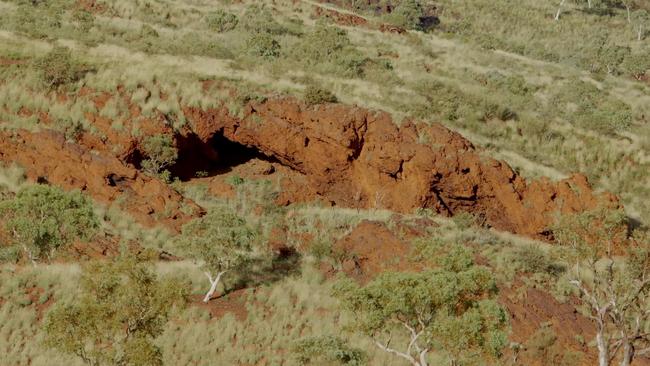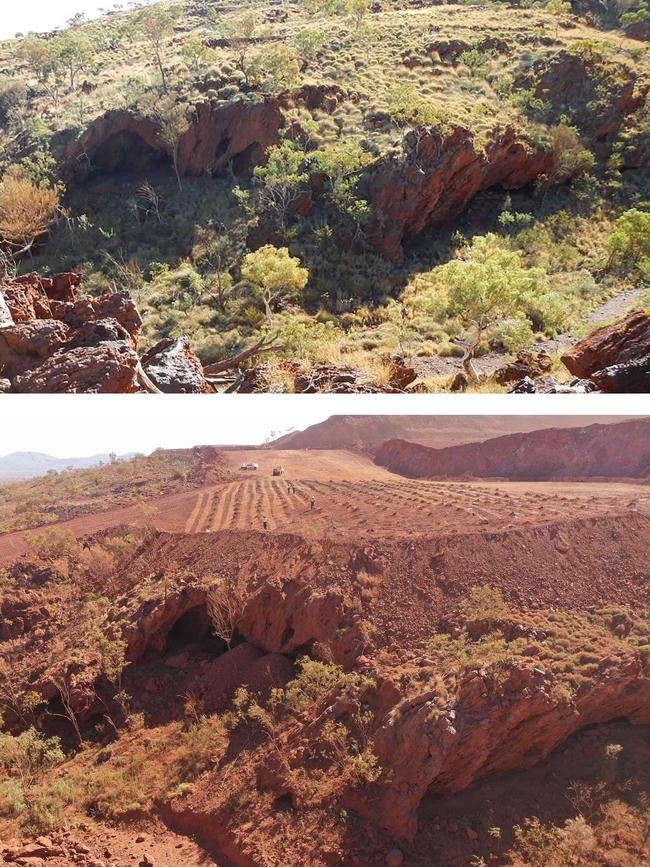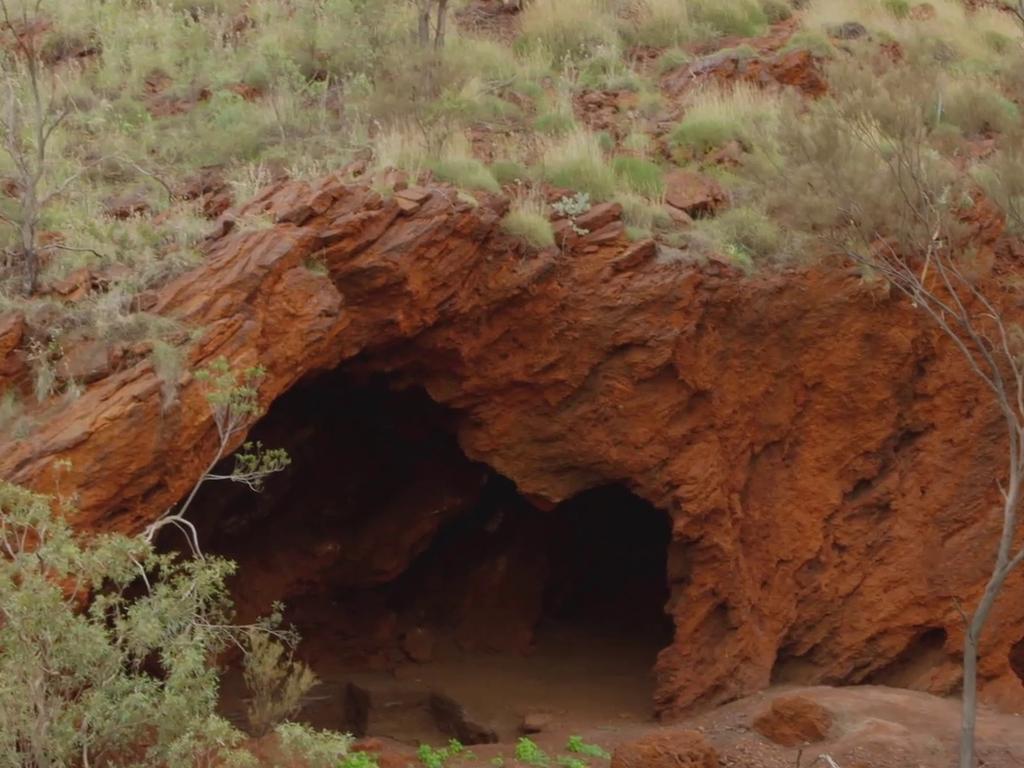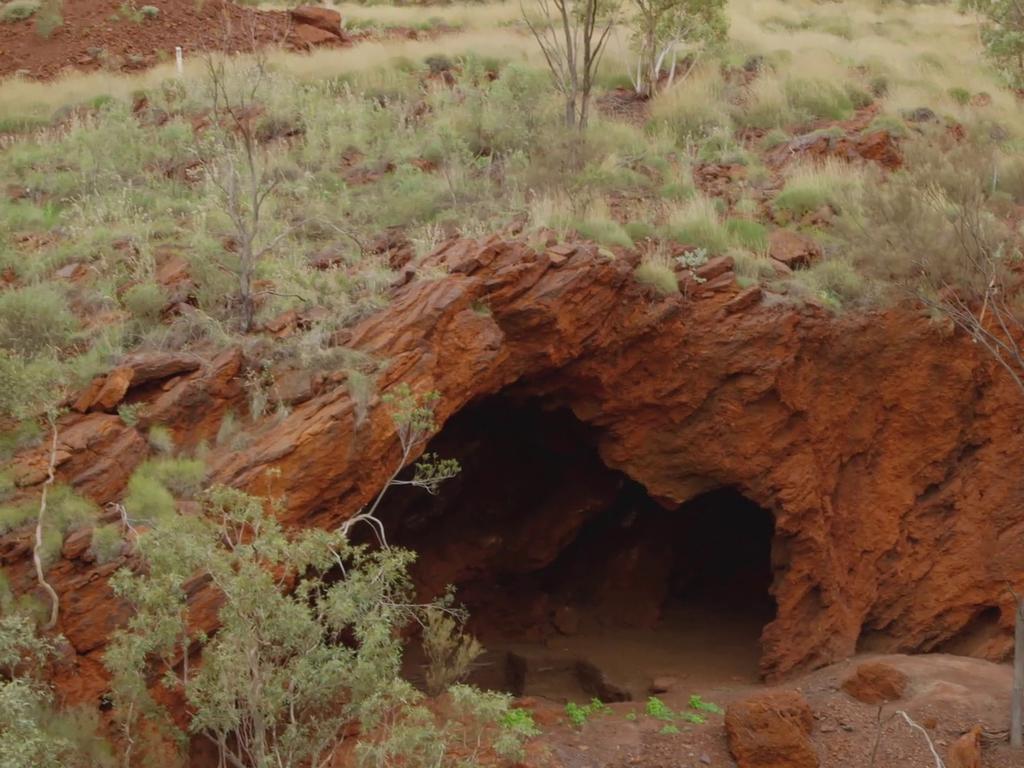Rio Tinto admits it had other options for Juukan Gorge site
Rio Tinto had three options to avoid destroying the Juukan Gorge caves, which showed traces of human habitation dating back 46,000 years.

Mining giant Rio Tinto had multiple mining options that could have avoided the destruction of the ancient Juukan Gorge caves in Western Australia’s Pilbara.
And the mine manager at the company’s Brockman operation was explicitly informed that the site was one of the “top five” most significant in the Pilbara some six months before the caves were drilled and detonated.
In a detailed submission to the parliamentary inquiry into the May incident, which saw Rio Tinto detonate caves showing traces of human habitation dating back 46,000 years, the company confirmed for the first time that it had three alternative mine plans for its Brockman 4 iron ore pit that all avoided the Juukan Gorge rock shelters.
“The fourth option impacted the rock-shelters in order to access higher volumes of high-grade ore, and was the option that was chosen by Rio Tinto,” the company said.
The revelation about the alternative options is part of the most detailed account to date from the company about the incident, which has damaged Rio Tinto’s corporate reputation, strained relations between Indigenous groups and miners, and accelerated an overhaul of WA’s Indigenous heritage protection laws.

The submission detailed a procession of missed opportunities to change the plans, including a discussion between the mine operations manager and PKKP heritage manager Dr Heather Builth at the site some six months before the blast.
The operations manager recalled Dr Builth saying: ‘Is that gorge/cave going to be taken out by the pits? It would be in the top 5 of location(s) in the Pilbara with respect to cultural importance’.”
According to Rio’s submission, “he was not sure to where Dr Builth was pointing” but the operations team proceeded on the assumption she was discussing the rock-shelters.
“It was agreed that the Heritage team would respond on whether the rock-shelters would be ‘taken out by the pits’. However, regrettably no response was provided to Dr Builth,” Rio Tinto said.
Rio admits the precise timing of its plan to blast the Juukan shelters was only communicated to the PKKP on 15 May 2020. By then, most of the explosives had already been loaded.
By 18 May, Dr Builth sent an urgent email requested the suspension of all works in the vicinity of Juukan Gorge. “We give notice that (PKKP) regards the Juukan Gorge and all its features in the highest possible regard due to its extreme cultural and scientific significance to us,” she wrote.
In a further blunder by Rio Tinto, the company discovered at that time that it had also started preparing for blasting near heritage sites where it had not secured the necessary approvals. The company ultimately removed stemming from eight of the holes, but one hole ultimately needed to be detonated. It said the additional sites were not impacted.
A desperate bid by the PKKP included hiring a blast specialist to explore whether the explosions could be stopped, but Rio mine safety officials deemed it was not feasible to remove the shot from blast holes at the sites and the explosives were detonated on 24 May.
Rio Tinto’s submission began with a frank acknowledgment that the caves should never have been damaged.
“The destruction of the Juukan rock-shelters should not have occurred. Rio Tinto has unreservedly apologised to the Puutu Kunti Kurrama and Pinikura people (PKKP), and we reaffirm that apology now,” the company said.
“For the benefit of current and future generations of Australians, we are determined to learn the lessons to ensure that the destruction of heritage sites of exceptional archaeological and cultural significance, such as the Juukan rock-shelters, never occurs again.”
But the mining giant also noted that the Juukan Gorge caves were not included on a list of 16 areas of high cultural significance identified by the PKKP at the time it signed an agreement with Rio Tinto in 2011.
The decision to mine the Juukan Gorge caves was made in 2013, the company said, and the PKKP were informed of both the application and granting of consent for the plan under Western Australia’s contentious Section 18 policy.
The company also acknowledged that excavations carried out at the caves in 2014 to salvage, analyse and preserve cultural heritage material should have prompted a rethink of its mining plans.
“As a result of these surveys, material new information on the significance of the Juukan rock-shelters became available to the PKKP and Rio Tinto,” the company said.
“It is clear that various opportunities were missed to re-evaluate the mine plan in light of this material new information. A further opportunity was missed in 2018, with the publication of the final report on the archaeological excavations at Juukan 2 conducted during 2014.”
The PKKP says it will not be making any comment while the senate inquiry is underway.
Rio Tinto chief executive JS Jacques will give evidence to the committee this Friday.







To join the conversation, please log in. Don't have an account? Register
Join the conversation, you are commenting as Logout